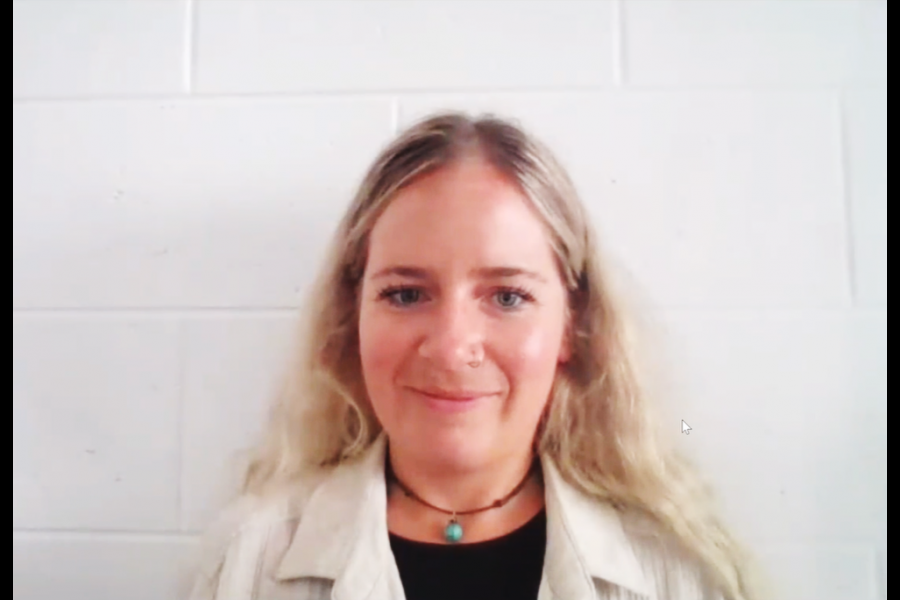Ecosystem restoration does not simply mean “green is good,” experts from Parks Canada told at an online seminar.
Some restoration practices can seem quite destructive, but they ultimately bring natural spaces back into balance, the scientists said during the latest seminar in a series by Brock University and the Niagara Parks Commission.
Tammy Dobbie, park ecologist at Point Pelee National Park, described the immense biodiversity of the park and the need for ongoing restoration.
The park was the first to be established for the purpose of conservation and there are environmental lessons for Niagara-on-the-Lake based on experiences at Point Pelee.
“Local naturalists saw that there was an incredible phenomenon happening in terms of bird migration… unique flora and fauna. It was actually established to protect that for all time,” said Dobbie.
She urged outdoor enthusiasts to use citizen-science apps like iNaturalist or eBird. “If you can report anything, even common species, it can be really helpful to scientists and park managers.”
Many Point Pelee visitors use these digital tools. “You can see over 6,500 species observed in the park – 300 native species of birds and 64 federally listed species-at-risk, which is the most in Canada,” she said.
Savannah habitat at Point Pelee, which has very little shade, includes eastern prickly pear cactus and Ontario’s only lizard: the five-lined skink.
Historically, natural disturbances kept savannah open and sunny, explained Andrew Laforet, project co-ordinator for Point Pelee’s resource conservation department. Today, he said, “climate change has stopped things like ice scour and fires have been suppressed for a very long time.”
To restore savannah, “we want to hit the reset button where nature hasn't,” said Laforet. Staff cut out invasive and large, shading plants, then dab stumps with herbicide to prevent regrowth.
There is also a globally rare savannah in Niagara-on-the-Lake: Paradise Grove, which is home to 200-year-old black oak trees. Like Point Pelee’s savannah, the forest was historically thinned by fire, but invasive species now grow rapidly and shade the rare, sun-loving plants.
Parks Canada removed about 90 non-native trees from Paradise Grove to help the eastern flowering dogwood, an endangered species that suffers from fungal infection when conditions become too shady.
As well as savannah, marsh habitat makes up two-thirds of the area of Point Pelee and supports a third of the park’s at-risk species. Unfortunately, “we’ve lost about 10 per cent of the open water habitat to invasive cattail mat and phragmites over the past 50 years,” said Laforet.
To restore the marsh, park staff cut phragmites below the waterline, which causes the plants to drown. “It’s really satisfying to see the results of the habitat change,” said Laforet.
After cutting 16,000 square metres of the invasive weed in 2020, his team burned 82 large piles of stalks. “This is one of the most rewarding parts of my job,” he said.
The team deals with thick cattails by using a large machine, “lovingly referred to as the Swamp Devil,” to carve out channels and restore open-water habitat.
“We don't just go in there, guns a-blazing, we have a very important protocol ahead of that,” said Laforet. The team surveys in front of the machine and adjusts the route to ensure no nests, at-risk plants, turtles or snakes are disrupted.
Brock master’s student Angela Mallett also presented her research, which compared visitor perceptions at Niagara Glen to data from an ecological assessment. She found that visitors and tour groups perceived the state of the environment quite positively, while stewards had a more realistic view of ecosystem health.
“Overestimation from visitors could be from the preconception that green is good and that protected areas are natural,” said Mallett.
For non-experts, it’s not easy to tell what “healthy” habitat looks like. At the same time, restoration activities themselves, like burning or chopping, can seem counter-intuitive.
“When you see restoration in action, it does look a little destructive, but it's done with the purest intentions,” said Laforet. “If you want to make an omelette, you gotta break a couple eggs.”
The final seminar in the series is Nov. 25 at 7 p.m. Participants can register for free on the Brock University or Niagara Parks websites.
Kyra Simone is a green-at-heart NOTL resident with master's degrees in biology and science communication. In her spare time, she advocates for sustainable change, picks up litter, makes recycled jewelry, and transforms furniture bound for the landfill.











